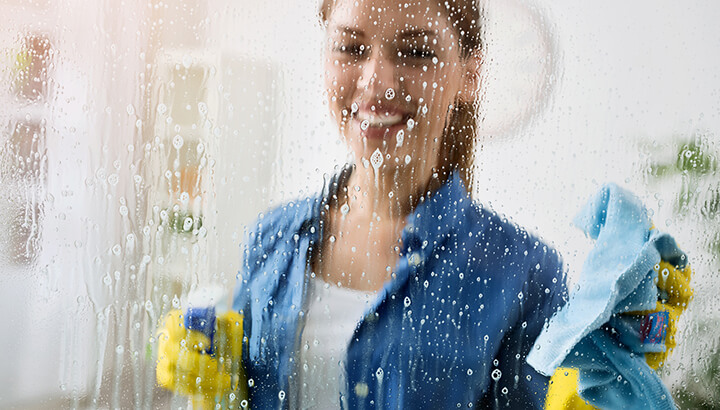
I love a clean house and windows are one of my pet peeves. My kids will tell you — I like my windows sparkling and will settle for nothing less than a streak-free shine. I admit I could probably write an ebook on how to keep your windows clean, including the best products to buy and the best methods to use.
In my pursuit of clean windows, Windex has always been among my top favorite cleaning products. However, after discovering just how unhealthy this product is, I have recently opted for natural solutions to satisfy my clean window compulsion.
Although Windex seems to be a staple in most home cleaning arsenals, it is actually a highly toxic substance that should never be used, especially inside the home.
What is actually in Windex
SC Johnson, the makers of Windex, have a website that publishes the ingredients in their products. According to their site, Windex Advanced contains the following:
- Water
- Isopropyl alcohol
- 2-hexoxyethanol
- Ethanolamine
- Disodium cocoamphodipropionate
- Sodium dodecylbenzene Sulfonate
- Alkyl polyglucoside
- Propylene glycol
- Ammonium hydroxide
- Fragrance
- Liquitint sky blue dye
The bad news
The Environmental Working Group (EWG) gives Windex Advanced a D rating when it comes to safety for human health and the environment. Here are the key ingredients that the EWG is highly concerned about.
Ammonium hydroxide

According to The National Institute for Occupational Safety and Health (NIOSH), this substance rates severe for being an eye and skin irritant. It can be ingested into the body through inhalation or if it comes in contact with the skin. When inhaled, this substance can cause a cough, sore throat, labored breathing and even shortness of breath. Some people can experience redness, rash or evening burning on the skin with prolonged contact. When this toxic substance comes in contact with the eyes it can cause redness, blurred vision and burns. Upon ingestion, ammonium hydroxide can induce abdominal cramping and vomiting.
Ethanolamine
Ethanolamine is a viscous, hygroscopic amino alcohol with an ammoniacal odor. This substance is commonly found in feedstock, detergents, polishes, pharmaceuticals, corrosion inhibitors, emulsifiers and chemical intermediates. Ethanolamine has reportedly caused both skin and respiratory tract irritation as well as eye injuries. In addition, inhalation exposure has also reportedly caused liver and kidney damage in animals exposed to the chemical.
Fragrance
Any time a synthetic fragrance comes in contact with your skin or eyes it can cause irritation. Some people are more sensitive than others, including those with a compromised immune system and the elderly and very young. Reported concerns with fragrance also include exacerbation of allergies.
Propylene glycol
This chemical is an active ingredient found in antifreeze and also some brands of toothpaste, where it is used as a wetting agent and surfactant. According to the Material Safety Data Sheets for propylene glycol, it can be readily absorbed into the skin. Long-term exposure to this chemical may cause brain, liver and kidney problems. The Environmental Protection Agency requires workers that handle propylene glycol to wear rubber gloves.
Issues with prolonged use
While you may not immediately realize the dangers using Windex poses to your health, regular, repeated use causes chemicals to build up in your system. For me, nixing Windex from my cleaning products was just one more victory for my health, no matter how small. I believe it all matters. Here are some of my favorite natural window cleaning solutions that you can use to replace your Windex and other similar commercial window cleaning products.
Castile soap window cleaner

I found that I can use the versatile Castile soap to make homemade window cleaner that does a fantastic job. Simply mix two teaspoons of soap and two cups of distilled warm water together with half a cup of white vinegar and six drops of tea tree essential oil, then pour the mixture into a spray bottle. I shake and spray, using newspaper to wipe off for sparkly, streak-free windows every time.
Vinegar window cleaner
This is one of the easiest and most effective nontoxic window solutions you can make. Combine 1/4 cup vinegar, 1/2 teaspoon liquid soap and 2 cups of water in a spray bottle. Shake before each use.
Simple lemon cleaner
Mix 2 tablespoons of fresh lemon juice and one quart of water in a spray bottle. Shake before use.
Window cleaning tips
Follow these tips for sparkling windows and mirrors:
— Susan Patterson

